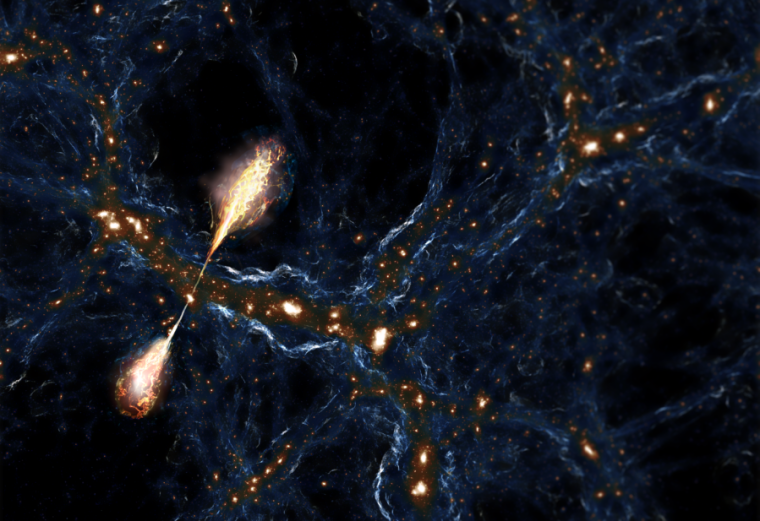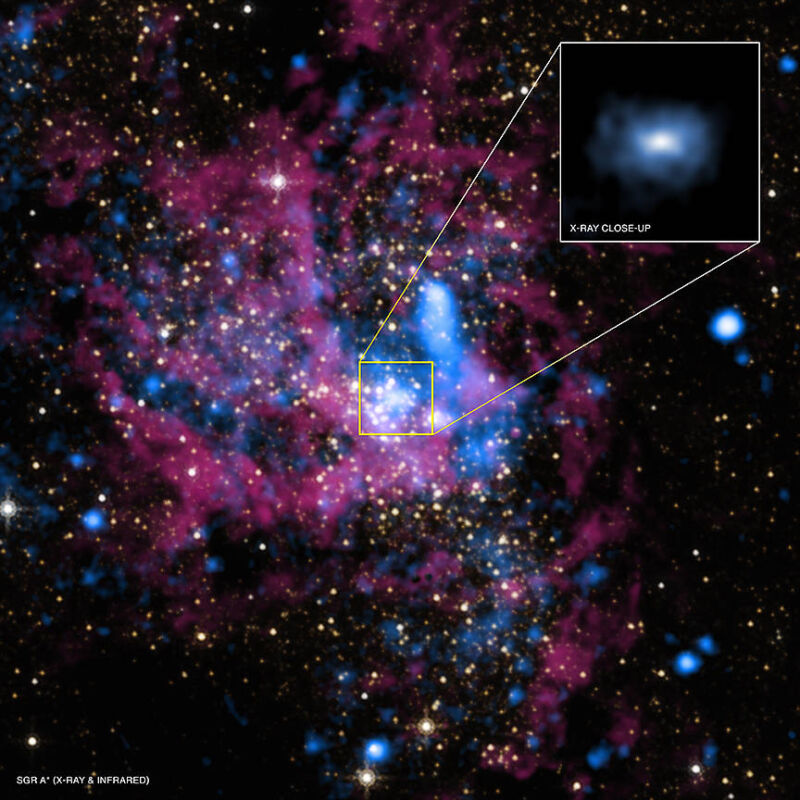Researchers spot largest black hole jets ever discovered

Enlarge / Artist's conception of a dark matter filament containing a galaxy with large jets. (Caltech noted that some details of this image were created using AI.) (credit: Martijn Oei (Caltech) / Dylan Nelson (IllustrisTNG Collaboration).)
The supermassive black holes that sit at the center of galaxies aren't just decorative. The intense radiation they emit when feeding helps drive away gas and dust that would otherwise form stars, providing feedback that limits the growth of the galaxy. But their influence may extend beyond the galaxy they inhabit. Many black holes produce jets and, in the case of supermassive versions, these jets can eject material entirely out of the galaxy.
Now, researchers are getting a clearer picture of just how far outside of the galaxy their influence can reach. A new study describes the largest-ever jets observed, extending across a total distance of 23 million light-years (seven megaparsecs). At those distances, the jets could easily send material into other galaxies and across the cosmic web of dark matter that structures the Universe.
Extreme jets
Jets are formed in the complex environment near a black hole. The intense heating of infalling material ionizes and heats it, creating electromagnetic fields that act as a natural particle accelerator. This creates jets of particles that travel at a substantial fraction of the speed of light. These will ultimately slam into nearby material, creating shockwaves that heat and accelerate that, too. Over time, this leads to large-scale, coordinated outflows of material, with the scale of the jet being proportional to a combination of the size of the black hole and the amount of material it is feeding on.
